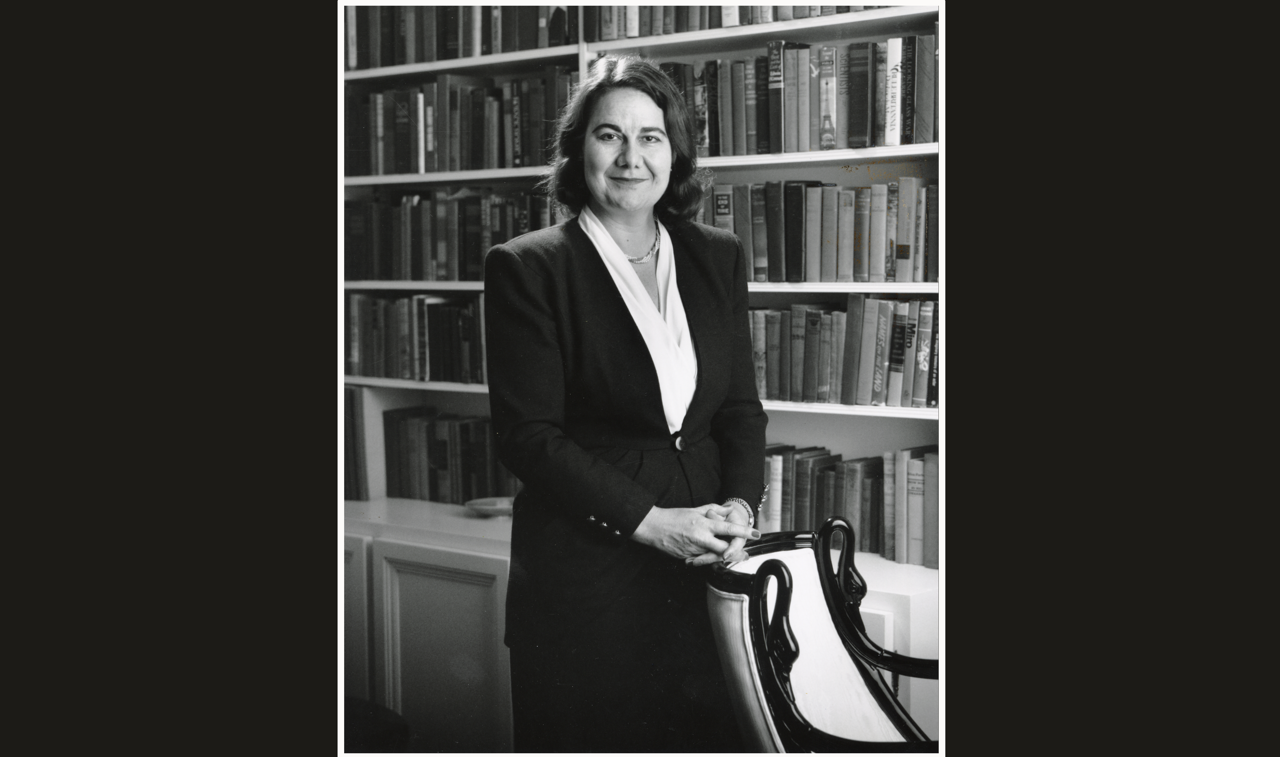Former McMaster president Geraldine Kenney-Wallace remembered as a trailblazing scientist

One of Canada’s leading scientists and a visionary leader, Kenney-Wallace served as the university’s president from 1990 to 1995. (Photo by David Gruggen/Provided by McMaster Library Archives & Research Collections)
Geraldine Kenney-Wallace, who served as McMaster’s president and vice-chancellor from 1990 to 1995, has died at the age of 80.
Kenney-Wallace began her five-year term at McMaster as one of Canada’s leading scientists. A trailblazer in many ways, she was the university’s first, and still only, female chief executive, as well as the first external presidential appointment since McMaster’s move to Hamilton in 1930.
Kenney-Wallace was a native of London, England, who began her university education at the University of Oxford before completing both her MSc and PhD in chemical physics at the University of British Columbia. She split the next half decade between academic posts at the University of Notre Dame and Yale University before returning to Canada in 1975 to join the faculty of the University of Toronto.
In Toronto, Kenney-Wallace built impressive credentials in both research and scientific leadership. An authority on lasers and optoelectronics, she authored more than 100 research publications during her career and achieved significant advances in the field of molecular motion.
She also earned a number of appointments to key government bodies including the National Advisory Board on Science and Technology chaired by the Prime Minister; the National Round Table on the Environment and the Economy; and the expert leadership groups that helped plan the centres of excellence strategies for both Ontario and Canada.
Kenney-Wallace chaired the Advisory Committee of the Premier’s Industry Technology Fund, as well as the CIDA National Advisory Panel on Centres of Excellence in International Development. Three years before taking on the presidential role at McMaster, she was appointed chair of the Science Council of Canada.
A Fellow of the Royal Society of Canada, Kenney-Wallace received numerous honours, including the Steacie Fellowship of Canada, the Corday Morgan Medal of the Royal Society of Chemistry, the Noranda Lecture Award of the Chemical Institute of Canada, the Killam Foundation Research Fellowship, the Guggenheim Fellowship and visiting professorships at École Polytechnique in Paris and Stanford University in California. She also received more than a dozen honourary degrees.
Kenney-Wallace’s McMaster presidency was a crucial period in the university’s progress. Her appointment and subsequent work as a champion for McMaster’s research strengths significantly raised the university’s national and international profile, establishing a new global mindset and international credentials for the institution.
On campus, she spearheaded the development of an ambitious university-wide strategic plan and was instrumental in the introduction of multidisciplinary theme schools.
“Dr. Kenney-Wallace was a trailblazing scientist and visionary academic leader,” says McMaster President David Farrar.
“Her many contributions played an important role in shaping McMaster into the research and teaching powerhouse it is today, and her influence will continue to be felt on our campus for generations to come.”
In the final column she authored for the McMaster Times alumni magazine before the end of her presidential term, Kenney-Wallace concluded with a personal reflection on McMaster, its community and its home nation in light of her extensive experience internationally.
“I cannot help also acknowledging how fortunate we are, in a comparative sense, living in Canada,” she wrote. “We have built upon our strength to reach out internationally. I hope the public and the governments will continue to make universities a priority so we can still offer our services to those in need.”
Geraldine Kenney-Wallace died in Monaco in October and was predeceased by her husband Stephen Wallace.

